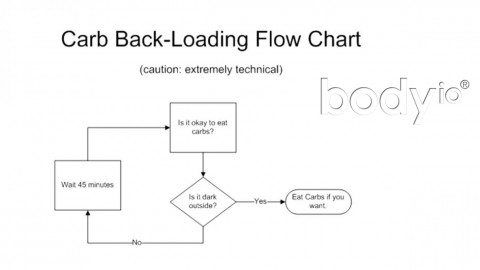e all know that regular physical activity is good for us.
Not all of us, however, are aware that the most health producing level of physical activity is vigorous to heavy exertion physical activity.
Adults who engage in regular vigorous or heavy exertion physical activity have the lowest risk for heart disease compared to those adults who engage in light and moderate levels of physical activity. Vigorous or heavy exertion physical activity also delivers the greatest contribution to improved longevity.
Unfortunately, government estimates of adult participation in regular vigorous physical activity have not risen above 15 percent for over a decade. The percentage engaging in heavy exertion physical activity is even smaller.
So, given the clear benefits to health, why don’t more adults engage in regular vigorous or heavy exertion physical activity?
One reason is the PATH.
The PATH
The Patterns of Adapting to Health (PATH) are deep behavioral patterns underlying adult behavior throughout the United States. These PATH affect health independently of age, sex, race or ethnic background, education or socioeconomic status. Described in detail in my book, Pattern of Health, these PATH are deep behavioral patterns hidden below the surface of visible health-related behaviors. Over a decade of research has revealed the broad and otherwise hidden effects of these PATH in accounting for disparities in adult health separate and distinct from more well-known predictors.
One of the reasons for this is the relationship between the PATH and levels of physical activity. Research has shown that physical activity levels, like the tip of an iceberg above the water, are one characteristic of much deeper and hidden behavioral patterns.
The PATH and Physical Activity

The graph shows two dimensions of physical activity associated with each PATH: the number of days spent in physical activity for at least 20 minutes (dashed line and left scale), and the intensity of the physical activity ranging from light to heavy exertion levels (solid line and right scale).
In terms of days and time spent in physical activity, the least amount of exercise at only about half a day per week for at least 20 minutes is a characteristic of PATH 2. Adults who possess this pattern of health behavior emulate the most sedentary lifestyle.
In contrast, exercising up to three days per week for at least 20 minutes is a characteristic of PATH 8, and to a slightly lesser extent of PATH 6, PATH 7, and PATH 9. These PATH are found in those adults reporting the highest frequency of exercise.
The intensity of physical activity across the PATH, however, is another story.
The only PATH with the characteristic of vigorous or heavy exertion levels of physical activity is PATH 8. No other PATH comes close. Not by coincidence, PATH 8 is associated with the best health and the lowest rates of most diseases.
The lowest intensity of physical activity, the one with the least health benefits, is a characteristic not just of PATH 2 but also of three other PATH as well;PATH 4, PATH 7, and PATH 9.These PATH all share the characteristic of low intensity physical activity and poor health as indicated by higher rates of physical or mental health problems and higher medical costs.
As mentioned above, only 15 percent of U.S. adults engage in vigorous level of physical activity at least 3 times per week. PATH 8 is found in 12 to 14% of adults, suggesting that PATH 8 is the driving force of this highly active 15 percent. All other adults are found in those PATH characterized by moderate or low levels of physical activity.
This answers the question of why more adults don’t engage in regular vigorous physical activity: the remaining 85% of adults who don’t engage in vigorous physical activity emulate deep health behavioral patterns with which vigorous physical activity is inconsistent. The PATH that you find yourself on is not your fault. Awareness is the first step in changing any problem- unless you’re a PATH 8; in which case,keep doing what you are doing for health and longevity. If you are on another PATH, as shared above, and you know you want know more, check out my interview with Kiefer.












